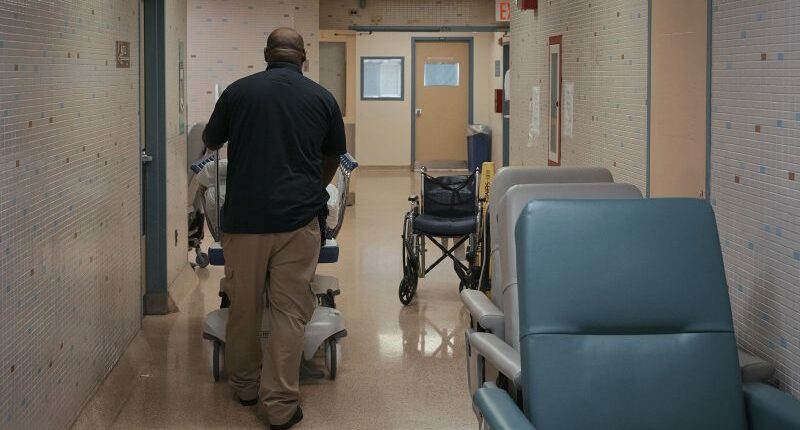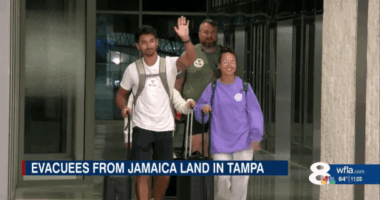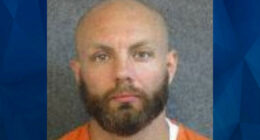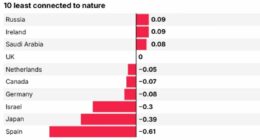Share this @internewscast.com

(The Hill) Hospitals are bracing for the impact of the Medicaid cuts in President Donald Trump’s sweeping spending and tax cut law.
While most of the cuts won’t happen immediately, rural facilities in particular say they likely will have to make difficult financial decisions about which services they can afford to keep and which may need to be cut.
Hospitals loudly raised alarms about the legislation, but their warnings went unheeded, and now they say they will bear the brunt of the changes.
The new law cuts about $1 trillion from Medicaid, primarily through stringent work requirements as well as reductions to how states can fund their Medicaid programs through provider taxes and state-directed payments.
Rural hospitals rely heavily on Medicaid funding because many of the patients they care for are low-income.
“Restrictions on state-directed payments and provider taxes cut off critical financial lifelines for hospitals,” Bruce Siegel, president and CEO of America’s Essential Hospitals, said in a statement.
“State-directed payments are a critical source of support for hospitals, particularly in rural areas, and provider taxes help reduce the gap between Medicaid and other payers, ensuring that physicians can take Medicaid patients and hospitals can be adequately staffed. Cutting these lifelines is not sustainable, and it will harm patients.”
More than 300 rural hospitals in the U.S. are at risk of closing down because of the bill, according to research conducted by the University of North Carolina’s Sheps Center for Health Services Research and released last month by Democratic lawmakers.
Rural hospitals already operate on thin margins. The law’s Medicaid cuts will lead to more uninsured patients, meaning rural hospitals will not get paid for the services they are required by law to provide to patients, according to the report. In turn, they will face deeper financial strain.
Medicaid-dependent services like labor and delivery units, mental health care, and emergency rooms are some of the least profitable, yet most essential, services that hospitals provide. But experts said those will likely be cut as hospitals try to stay afloat.
In rural communities, Medicaid covers nearly half of all births and one-fifth of inpatient discharges, according to health research group KFF.
Republicans pushed back the start date for the provider tax reductions until 2028, and they won’t be fully phased in until 2031. The bill was only signed into law on July 4, so hospitals said it’s too early for them to know specifics on which services they’ll have to cut back on.
But the discussions are underway because hospitals need to start planning.
“If they see a very negative outlook in terms of Medicaid revenue reductions, increases in uncompensated care costs, I think that will tip the scales towards cutting services, cutting staff, not hiring, not expanding,” said Edwin Park, a research professor at the McCourt School of Public Policy at Georgetown University.
Mark Nantz, president and chief executive officer of Valley Health System, oversees a network that includes six hospitals in the Shenandoah Valley of Virginia and West Virginia, ranging from a 495-bed regional facility in Winchester to a 36-bed facility in Front Royal, about 70 miles outside of Washington.
Nantz said Medicaid expansion and provider taxes have allowed the system to break even when taking care of Medicaid patients. Previously, they were losing about 25 cents on every dollar.
Once the cuts are fully phased in, Nantz said Valley Health will lose about $50 million a year in revenue for Medicaid patients. The most likely casualty will be new construction and expansion plans, but he said it’s too early to know more.
“We’re not in a situation where we need to knee-jerk because we’re a pretty stable healthcare system, but it’s definitely going to change the way we look at expanding and the types of services that we offer in our six hospitals,” Nantz said.
Valley Health was able to expand the services it offers because it was not losing money on Medicaid, but that may not be able to continue. While hospitals may not close, some types of specialty care may be moved from rural facilities and centralized at the regional facility.
“We’ve got, really, two and a half to three years to make those kinds of decisions and prepare for what we will do. So we’re not threatening to cut jobs or hospitals or service locations or any of that right now,” Nantz said. “But we have to look at whether or not we can continue” offering the same types of services.
Republicans concerned about the impact of the provider tax reduction on rural hospitals inserted a $50 billion relief fund into the law. The law calls for the money to be distributed by the Centers for Medicare and Medicaid Services (CMS) over five years.
The federal government will distribute half of the program’s $50 billion allotment equally among all states with an approved application over the next five years.
But experts said the money isn’t nearly enough to make up for the impact of the cuts. According to a KFF analysis, federal Medicaid spending in rural areas is estimated to decline by $155 billion over a decade.
The states and hospitals that will be hit the hardest will benefit the least, Park said.
He noted the law gives the Trump administration a lot of discretion on how they divide up the funds, so there’s potential for favoritism.
Every state has until the end of 2025 at the latest to apply for funds by submitting a “detailed rural health transformation plan” that addresses the program’s aims, according to the legislation.
But if CMS Administrator Mehmet Oz doesn’t agree with how states are using their funds, the law says he then “may withhold payments to, or reduce payments to, or recover previous payments from, the State.”
“It’s a fig leaf,” Park said. “The fund is temporary. These cuts are permanent.”













